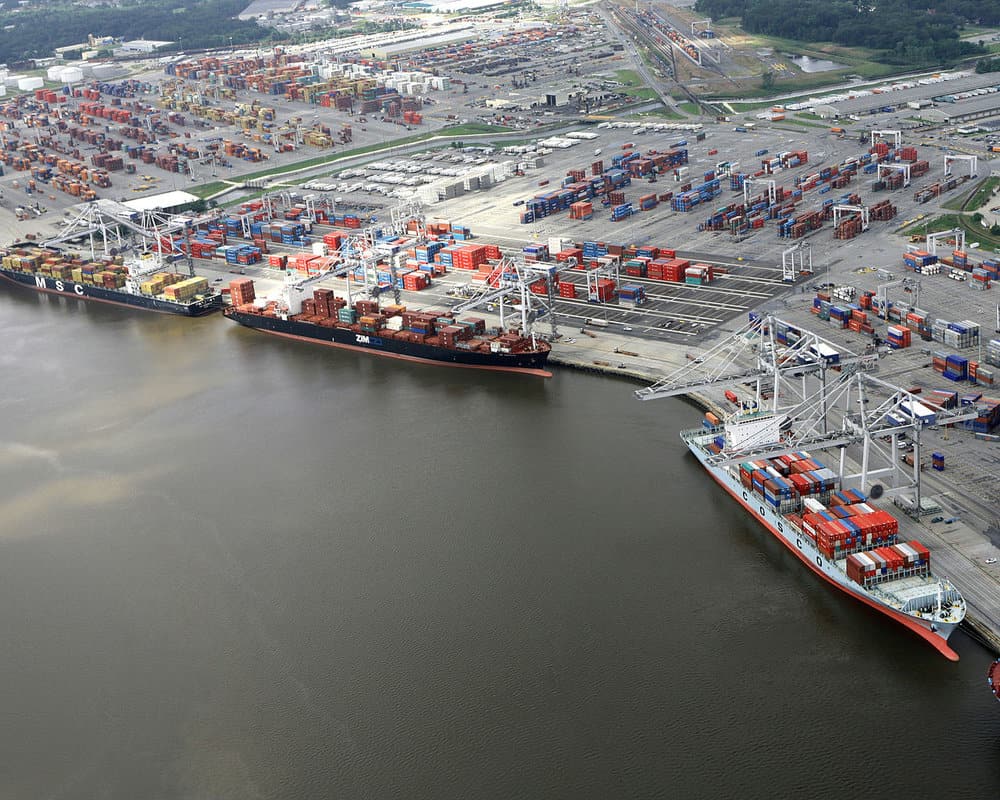
As we approach the holiday retail season, carriers and brokers have shifted their attention to the country’s major ports to capture upward volatility in trucking volumes. Outbound volumes from Los Angeles (OTVI.LAX) have climbed 12% in the past ten days, while Savannah’s volumes (OTVI.SAV) have skyrocketed an astonishing 127% since September 5.
Spot rates out of Savannah have remained flat, as most of the moves leaving the port are regional and capacity stays in the market. Los Angeles has been a different story. While tender rejections (OTRI.LAX) have trended downward in Los Angeles all month, shippers have realized that it’s in their interest to pay for service. According to DAT’s RateView tool, dry van spot rates from Los Angeles to Dallas have averaged $2.07 net of fuel over the past seven days, a 13% premium against September’s average of $1.82. Rates from Los Angeles to El Paso have been elevated since June, and have trended up slightly to $2.37 net of fuel over the past seven days.
Eventually, we expect more volatility in Savannah prices. Since October 17, inbound turndowns (ITRI.SAV) have started diverging upward from outbound turndowns, outpacing them 7.1% to 5.53%. If carriers continue rejecting loads moving into the Savannah market at a higher rate than they reject loads headed out of the market, Savannah’s capacity will be gradually depleted. Again, this pressure on capacity will be mitigated, to some extent, by the regional nature of the Savannah market. Over the next seven to ten days, more longhaul moves will originate in regional hubs like Atlanta and Charlotte, after the inbound containers are de-consolidated, palletized, and sent deeper into the freight network.

Steamship capacity on the eastbound Transpacific lane remains very tight; container rates from China to West Coast ports rose to $2,525 per FEU, the highest level year-to-date. Meanwhile rates from China to the East Coast fell for the third straight week to $3,322, contracting the Panama Spread (FBX.PANA) to $897. We’ve heard from international freight forwarders that steamship lines are pushing their East Coast services because capacity is so tight going into the West Coast; that may be why rates into Savannah have been discounted.
Although Los Angeles’ outbound volumes are at year-to-date highs, so far rich contract rates and more trucks have kept prices under control. Trucking capacity in the Los Angeles market (TRUK.LAX) has swelled by 15% since May, compared to an increase in overall national capacity (TRUK.USA) of 5%. Meanwhile, Savannah has added even more capacity (TRUK.SAV)—19% since our benchmark in May. The added capacity has suppressed turndown rates and spot rate volatility. That’s not to say that shippers are moving freight inexpensively—contract rates have settled at multi-year highs.
Publicly traded providers of trucking capacity—truckload carriers, of course, but also leasing companies like Ryder (NYSE: R) and brokerages like Echo Global Logistics (NASDAQ: ECHO)—have benefited from growth in volumes that have consistently outpaced capacity growth. Knight-Swift’s (NYSE: KNX) Q3 revenue in its Knight Trucking division was up 31% year-over-year, while Covenant (NASDAQ: CVTI) grew its Q3 revenue 36.2% year-over-year. Even though we should be well into a period of ‘tough comps’, i.e., the third quarter of 2017 was also exceptionally strong for trucking, remember that Knight Trucking in particular manages its assets in a disciplined way, and is able to protect margins even with more spot exposure than its competitors, capturing most of the upside while avoiding the downside of the cycle.











